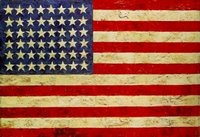
By the end of World War I, the United States had begun to replace England as the financial center of the world economy, because it was the only country from which short- and long-term capital could be obtained. In the 1920s, American industry and agriculture grew at a rapid pace and entered a period of prosperity and expansion. This was in contrast to Germany, which, under the terms of the Treaty of Versailles and after being forced to return Alsace-Lorraine to France, part of West Prussia, and the mining region of Upper Silesia to Poland, had to give up all of its colonies and most of its fleet, and was forced to bear the cost of war reparations to the victors, which were particularly punitive and heavy, and constituted a major brake on economic recovery and the hoped-for but unrealized improvement in the social situation. The payment of war reparations and the difficulties of reconstruction and industrial conversion led to an economic crisis that peaked between 1922 and 1923.
At the end of 1923, Germany embarked on a strict monetary stabilization program to halt inflation, which had reached unsustainable levels. To help Germany, and not only Germany, substantial international aid arrived, mainly from the United States, and especially from its banks, which were attracted by the high interest rates involved, while U.S. traders imposed free movement of goods and capital on both their own government and Europe. The world economy recovered and returned to pre-World War I levels in a relatively short time. The economies of France and England grew steadily, and American industry and agriculture exported much of their production to Europe. Beginning in 1925, as the situation in Germany also began to improve, markets began to become saturated due to overproduction, especially of agricultural products. Prices began to fall and protectionism returned with the imposition of cross tariffs.
Between 1926 and 1928, the U.S. stock market index doubled, attracting capital from large investors and individuals who did not hesitate to take on debt to invest in stocks. When interest rates began to rise, investors were forced to sell their stocks to repay the loans they had taken out, the burden of which had become too great. In 1929, stock prices plummeted as everyone was selling and no one was buying. Overproduction, the stock market crash, companies shutting down or drastically reducing production, and the resulting rise in unemployment ushered in the Great Depression, which lasted dramatically until 1932.
The American crisis quickly spread to Europe. With the collapse of Wall Street, the flow of capital and investment, which had grown steadily over the years, came to a halt, causing difficulties for all Western economies, and especially for Germany, which was also affected by the institutional crisis that had overwhelmed the Weimar Republic. Economic and, consequently, social difficulties, combined with uncertain and confused policies, brought Adolf Hitler's National Socialism to power in Germany.
In 1932, U.S. President Franklin Delano Roosevelt launched a new economic policy based on the teachings of economist John Maynard Keynes, who had strongly criticized the burden of sanctions imposed on Germany. The New Deal called for massive public works projects to increase employment and government control of industrial competition to prevent further crises of overproduction. While America sought to rebuild its economy through heavy investment in public works, in the second half of the 1930s other countries chose to invest in rearmament and/or territorial expansion in search of new markets. Inevitably, international conflict increased: Italy's colonial war in Ethiopia in 1935, the Spanish Civil War between 1936 and 1939, Japan's invasion of Manchuria in 1937, the annexation of Austria in 1938, and Germany's invasion of Bohemia and Moravia in 1939, where public investment in rearmament and heavy industry had brought the population to full employment.
The U.S. economy did not return to pre-war levels until the outbreak of war, when industries began producing war equipment to fuel the Rent and Loan Act for the Allies and the massive rearmament that preceded and followed entry into the war in 1940. The new equilibrium of the American financial system was financed by the issuance of government bonds, which were purchased by local banks with money collected from savers. With the return of war production, large corporations no longer needed credit, and the big banks survived by acting as intermediaries for the enormous amounts of money that flowed from Europe in the form of capital flight to the only financial center truly safe from invasion.
Bibliography:
L'oro in Europa (Gold in Europe) by Marcello de Cecco
The Great Crash, 1929 by J.K. Galbraith.

